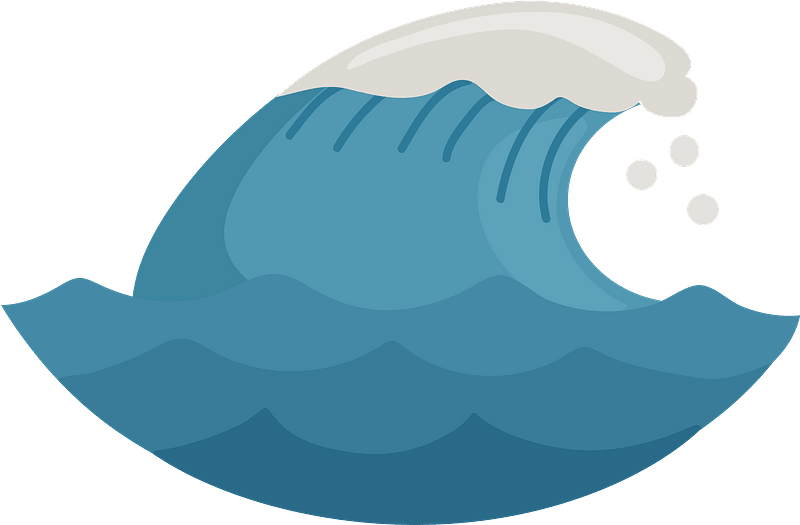A Step-by-Step Guide: Combating Aquaphobia.
Tactics That Helped 1,345 People Overcome Intense Fear in the Swimming Pools.
Tactics That Helped 1,345 People Overcome Intense Fear in the Swimming Pools.
In this article, I go through what is fear of water (aquaphobia), and how to help yourself when you feel like you are losing control.
You'll learn:
If you are ready to break through your extreme fear and live your life to the fullest, this guide is for you.
Let's dive in.
You'll learn:
- What is aquaphobia
- What causes specific phobias
- Common symptoms of water anxiety
- Relaxation techniques that helped my clients
If you are ready to break through your extreme fear and live your life to the fullest, this guide is for you.
Let's dive in.

By Maria Rezhylo
3x World record holder in swimming & swim school owner
Jan. 31, 2023
Jan. 31, 2023
introduction
What is a phobia of water?
Aquaphobia is a fear of water. Typically, people experience various physical responses, from difficulty breathing to muscle spasms. In extreme cases, physical symptoms lead many individuals to avoid everyday activities like taking a shower.
Science says it's an anxiety disorder
In the Diagnostic And Statistical Manual, aquaphobia is classified as an anxiety disorder (specific phobias).
Specific phobia is typically an irrational fear of something possessing little to no actual danger. In our case, it's water.
In most cases, when phobias are not treated promptly by a mental health professional, the consequences can be devastating.
Recent World Mental Health Surveys indicate that aquaphobia played a role in the onset of other common mental disorders.
Specific phobia is typically an irrational fear of something possessing little to no actual danger. In our case, it's water.
In most cases, when phobias are not treated promptly by a mental health professional, the consequences can be devastating.
Recent World Mental Health Surveys indicate that aquaphobia played a role in the onset of other common mental disorders.
How many people suffer from an irrational fear of water? Aquaphobia statistics.
Don't worry because you are not alone. And I have data to back it up.
In 2017, World Health Organization conducted a study among 22 low, middle, and high-income countries. The prevalence of fear of water around the world is 2.3%.
Per WHO, females are more prone to developing specific phobias than males.
Interestingly enough, people from higher-income countries have higher rates of specific phobias. That said, the prevalence of fear of water in any form in the US is 4.3%.
The average age of aquaphobia development is 8 years.
Bodies of water people are most scared of in the US:
In 2017, World Health Organization conducted a study among 22 low, middle, and high-income countries. The prevalence of fear of water around the world is 2.3%.
Per WHO, females are more prone to developing specific phobias than males.
Interestingly enough, people from higher-income countries have higher rates of specific phobias. That said, the prevalence of fear of water in any form in the US is 4.3%.
The average age of aquaphobia development is 8 years.
Bodies of water people are most scared of in the US:
- Deep water in the swimming pools - 46%.
- Large bodies of open water - 54%.
What can trigger symptoms
Despite all the junk information you might read on the internet, there's no definite answer to that. You can develop aquaphobia for many contributing factors.
Common causes of aquaphobia:
Common causes of aquaphobia:
1
Traumatic experience
Something like a near-drowning experience can trigger persistent fear that this will happen again.
2
Environment
Behavioral patterns are often learned through observation. Kids can develop water fear from observing their mom, dad, or another family member expressing fear.
3
Genetics
Family history plays a significant role in the development of specific phobias. That being said, parents can genetically transfer their phobias to kids.
4
Low self-esteem
Individuals with low self-esteem may have difficulty overcoming the physical or emotional demands of swimming or being in the water and may fear failing and drowning.
5
Conditioned response
The process of conditioned fear response typically occurs through classical conditioning. A neutral stimulus (e.g., bodies of water) is paired with an unconditioned stimulus (e.g., physical symptoms or traumatic event) that naturally evokes a fear response (unconditioned response).
Phobias and anxiety disorders demonstrated
The most common scenario I see in my practice:
We get to the swimming pool, and clients get nervous. They start thinking about a million scenarios of how it could go wrong. Suddenly, they remembered how Titanic ended. We are one step away from a panic attack.
Heartrate rate starts to go up, and they start breathing faster. At this point, they consider leaving the pool. "Maybe next week it's going to be better," - they say.
And next week, it's the same story. But this time, clients also get negative self-talk in their heads. Does that sound familiar?
And that's when I give them a little science talk.
We get to the swimming pool, and clients get nervous. They start thinking about a million scenarios of how it could go wrong. Suddenly, they remembered how Titanic ended. We are one step away from a panic attack.
Heartrate rate starts to go up, and they start breathing faster. At this point, they consider leaving the pool. "Maybe next week it's going to be better," - they say.
And next week, it's the same story. But this time, clients also get negative self-talk in their heads. Does that sound familiar?
And that's when I give them a little science talk.
The science behind anxiety disorders and aquaphobia
In the case of a specific phobia, we fear a particular object. In our case, it's water.
When we are exposed to a trigger, we feel fear.
When we feel fear, our body produces two main hormones responsible for survival: cortisol and adrenaline. These hormones lead to a sequence of events in your body.
Finally, a part of the brain that is responsible for your survival, amygdala, now gets the signal that you are in danger.
Amygdala knows that when it happens - it needs to save you.
When we are exposed to a trigger, we feel fear.
When we feel fear, our body produces two main hormones responsible for survival: cortisol and adrenaline. These hormones lead to a sequence of events in your body.
Finally, a part of the brain that is responsible for your survival, amygdala, now gets the signal that you are in danger.
Amygdala knows that when it happens - it needs to save you.
Amygdala will trigger the common symptoms of aquaphobia
- Dizziness
- Confusion
- Increased heart rate
- Shallow breathing
- Excessive sweating
- Chest pain
- Chills
- Nausea
Why your brain sends these signals
Why your brain sends these signals
To simplify it, your brain tries to prevent previous traumatic events from happening. Your brain doesn't have eyes, so it doesn't know that there's no actual danger.
It doesn't know that you are not Jake from Titanic.
Being in the swimming pool poses no danger to your life if you follow simple precautions and learn to swim.
It doesn't know that you are not Jake from Titanic.
Being in the swimming pool poses no danger to your life if you follow simple precautions and learn to swim.

Why explaining the science of aquaphobia
My clients and I start at a shallow area of the swimming pool. There's no need for extreme fear and panic attacks. But it happens anyway.
If only Amygdala had eyes, it would be surprised. All that stress and fear, for what? False alarm.
Essentially, I am speaking to the rational part of the brain.
I find that it gets better once people understand a little bit of science behind their aquaphobia.
We are then one step closer to breaking free from it.
If only Amygdala had eyes, it would be surprised. All that stress and fear, for what? False alarm.
Essentially, I am speaking to the rational part of the brain.
I find that it gets better once people understand a little bit of science behind their aquaphobia.
We are then one step closer to breaking free from it.
Exposure therapy and fear of water
The most successful way to treat aquaphobia is cognitive behavioral therapy. It's a vital instrument in the treatment of explicit phobias.
Cognitive behavioral therapy addresses the thoughts, reactions, and behavioral patterns that occur when you are exposed to a trigger.
Exposure therapy is one of the features of CBT that helps people to rationalize their thoughts and modify their behavioral patterns. And that's exactly how I walk my clients through their fear of water.
Exposure therapy can change a person's response to fear and eliminate all physical symptoms.
Cognitive behavioral therapy addresses the thoughts, reactions, and behavioral patterns that occur when you are exposed to a trigger.
Exposure therapy is one of the features of CBT that helps people to rationalize their thoughts and modify their behavioral patterns. And that's exactly how I walk my clients through their fear of water.
Exposure therapy can change a person's response to fear and eliminate all physical symptoms.
My safe step-to-step process that WORKS walks you through phases:
My safe step-to-step process that WORKS walks you through phases:
1
Exposure
We will face our biggest fear, water, together.
2
Initial reaction
I'll hold your hand (virtually), and help you not to quit.
3
Flipping negative to positive messages
You'll work on following your thoughts without reaction. And then, we flip them to the positive pep talk.
4
Low self-esteem
Individuals with low self-esteem may have difficulty overcoming the physical or emotional demands of swimming or being in the water and may fear failing and drowning.
5
Moving to deep water (when ready)
And gradually, you'll take steps all the way to the deep water. 100% safe.
1,345 of my clients combated panic attacks in the water this way:
Remember to perform these steps gradually in a safe environment. Avoid deep bodies of water if you can't swim. Your reactions, thoughts, feelings, and sensations should decline in severity over time.
- Get into the swimming poolI know; that's where I lost half of you all. But let's try it for the sake of the hours I spent writing it.
Get into the most shallow point of the swimming pool. It's better to choose the swimming pool that you are most familiar with.
Don't go to deep water where you can't help yourself. - Listen to your thoughtsWhat are you thinking about right now? Negative self-talk is okay until you don't act on it.
Just keep paying attention to your thoughts without giving them any validation or emotional response. - Now, let's analyzeThink about your past traumatic events or negative associations you have. Is the current situation even remotely as dangerous?
You're standing on your feet at the most shallow point of the swimming pool. You are okay now, and it'll be okay moving forward. - Some positivityDon't forget to celebrate your little steps to breaking water fear.
You're doing GREAT! - Focus on breathingKeep taking deep breaths in and out.
Deep breathing will help your body slow down your heart rate and calm your mind.
Once your thoughts are not running 10000 miles per second, let's take another step. - Put your face in the water (if ready)Whenever you are ready, try putting your face in the water. Take a deep breath, submerge only your face, and count to 5. Make sure not to breath-in underwater.
Then, come up and continue breathing with the same cycle of noticing your thoughts. It's okay to be scared!
Repeat this cycle a few times until it becomes more comfortable. - More positive messagesHere, we will stop again and celebrate your victories.
- Submerge underwater (when ready)Now, it's time to submerge fully underwater.
You'll probably notice the same cycle of negative thoughts in your brain, but it's okay. You've been there, and you successfully overcame a lot of them.
Take a deep breath, submerge with your head underwater, and again count to 5. Come up and continue breathing normally.
Repeat this cycle until it becomes more comfortable. - Gradually move to deep waterOnce you become entirely comfortable in shallow water, I recommend moving towards the deep water of the swimming pool.
If you can't swim that it's better to do that with a swimming instructor.
You'll face fear often during the process, but remember to praise yourself for your victories.
Treating specific phobias is hard but possible
Many of my clients successfully overcame their fear of water. All it took was a little self-confidence.
Keep going through the simple cycle of gradual exposure until you feel more comfortable. Accept your fear, embrace it, and become best friends with it.
If you feel like the level of fear doesn't decline, I recommend consulting a psychiatrist.
Professional help can significantly decrease the level of distress from your phobia. With modern medication and treatment options, change is possible.
The faster you address your anxiety disorder, the higher your chances of combating it. There's no shame in it.
Keep going through the simple cycle of gradual exposure until you feel more comfortable. Accept your fear, embrace it, and become best friends with it.
If you feel like the level of fear doesn't decline, I recommend consulting a psychiatrist.
Professional help can significantly decrease the level of distress from your phobia. With modern medication and treatment options, change is possible.
The faster you address your anxiety disorder, the higher your chances of combating it. There's no shame in it.
Final thoughts
You see, we form specific phobias for various reasons. Over time, it starts to affect our lives. If you are at this point in your life, it's better to act now.
Just know that there's always hope and help. Many of my clients successfully overcame their fear of water. All it took was a little self-confidence.
At Fast Swim Academy, we understand the importance of educating people about water safety. That's why we provide you with useful tips for beginners every week, so you can move at your own pace while immersing yourself in the world of swimming.
Subscribe to our newsletter to build that confidence and comfort of being in the water.
Just know that there's always hope and help. Many of my clients successfully overcame their fear of water. All it took was a little self-confidence.
At Fast Swim Academy, we understand the importance of educating people about water safety. That's why we provide you with useful tips for beginners every week, so you can move at your own pace while immersing yourself in the world of swimming.
Subscribe to our newsletter to build that confidence and comfort of being in the water.
Related articles
What is ISR Swim Lessons? A Complete Guide From Pro Swim Instructor
ISR swim lessons emerged awhile ago due to the increase in drownings rates. CDC and AAP recommends swimming lessons to protect kids. What is ISR lessons? ISR vs traditional swim lessons? We will help you to choose.
Essential Swimming Equipment For Beginners in 2023 - Top Products
Do you think that swimming equipment is expensive? WRONG! Dive into our ultimate budget-friendly guide to the world of swimming equipment for beginners to learn more.
How To Teach A Kid To Swim - STEP BY STEP GUIDE [2022]
Looking to teach your kid baby to swim? Don't know where to start? Our guide covers everything from swimming exercises for kids and their parents, to essential equipment, and more. Let's dive in!
Florida Open Water Swims 2023 | Confirmed Open Water Swims in Florida 2023
We gathered information about all upcoming 2023 Open Water Swims in Florida for swimming enthusiasts. Save the date so you don't miss them!
Florida Drownings Infographic (2023) - Fast Swim Academy
We collected data on Florida's drownings and near-drowning events from official governmental institutions. Then, we put it in an easy-to-read infographic so you can understand it better.
Sign up for our newsletter
Get all the essential news about the world of aquatics

Until next time, practice our guide frequently!
